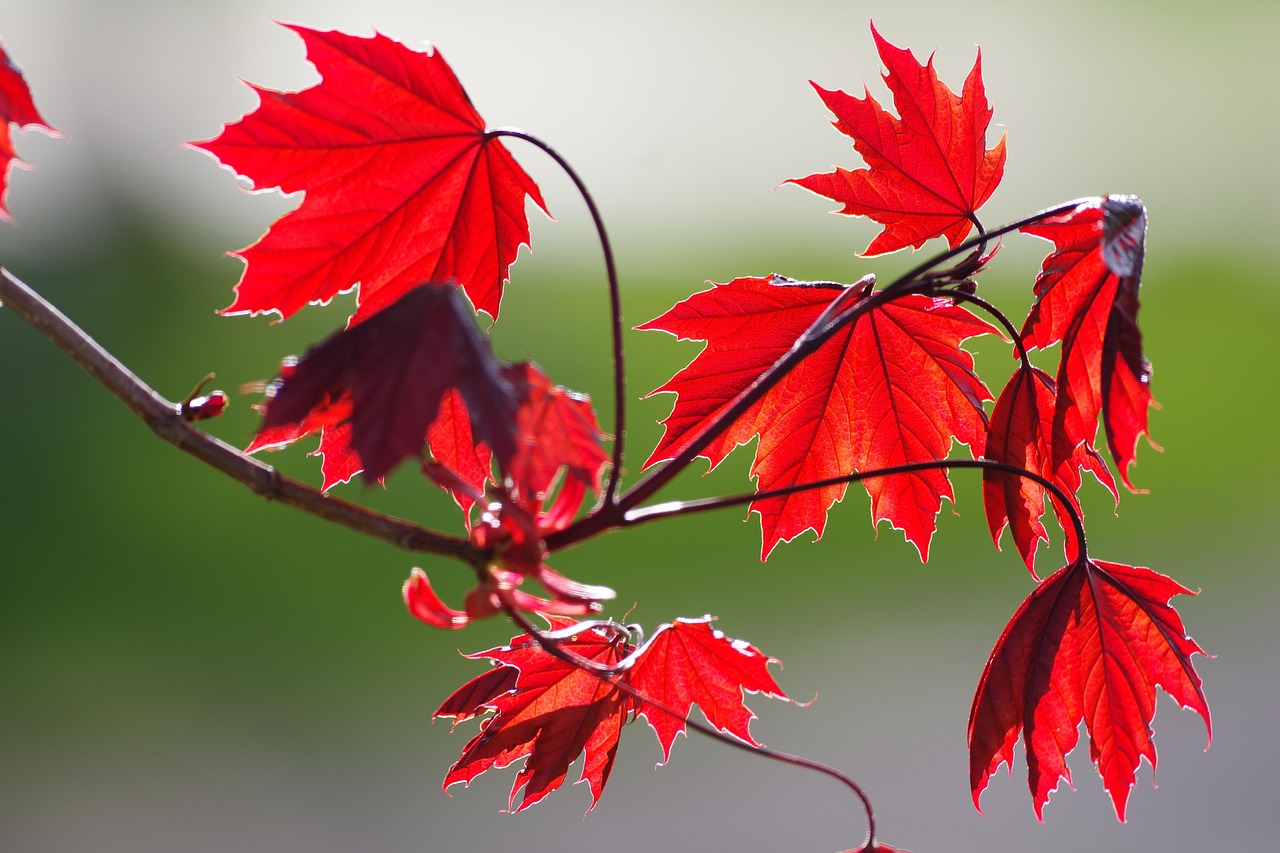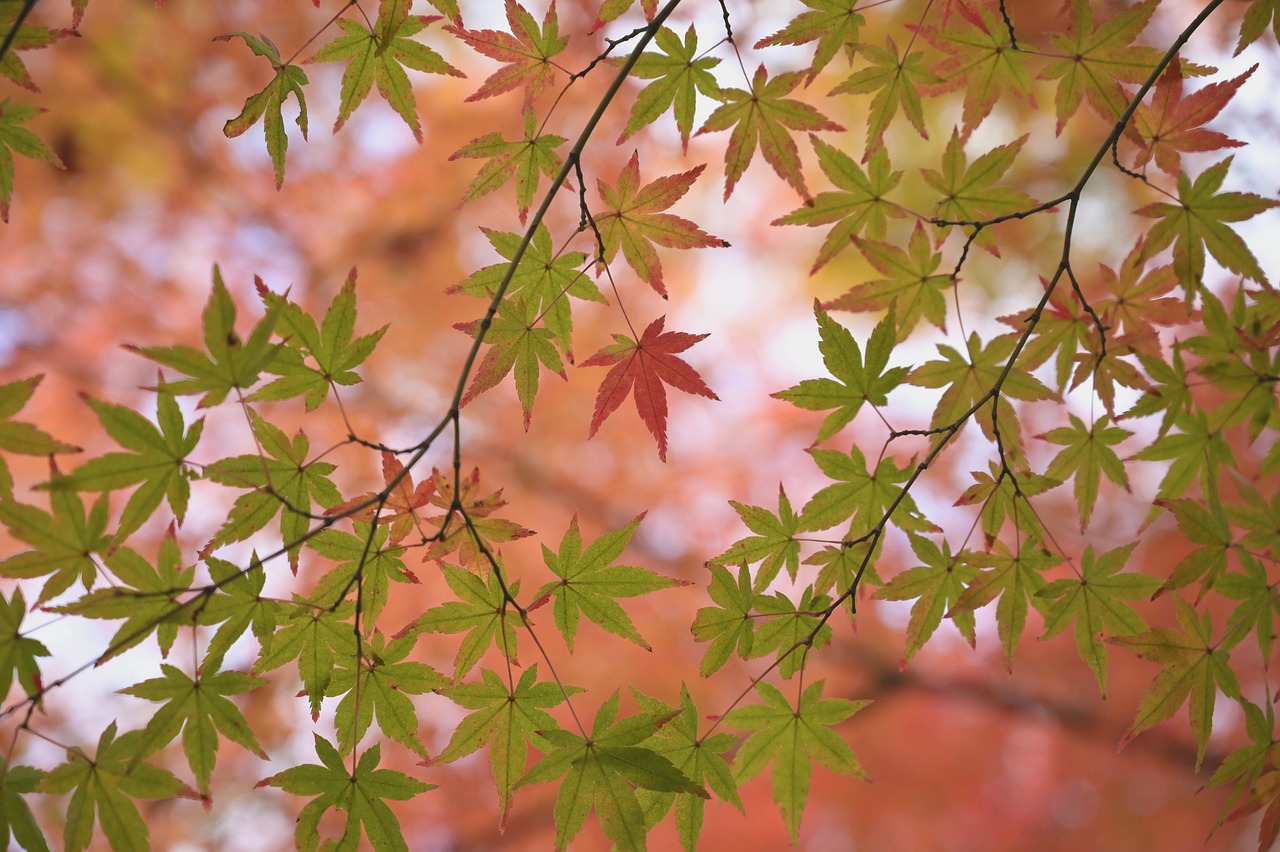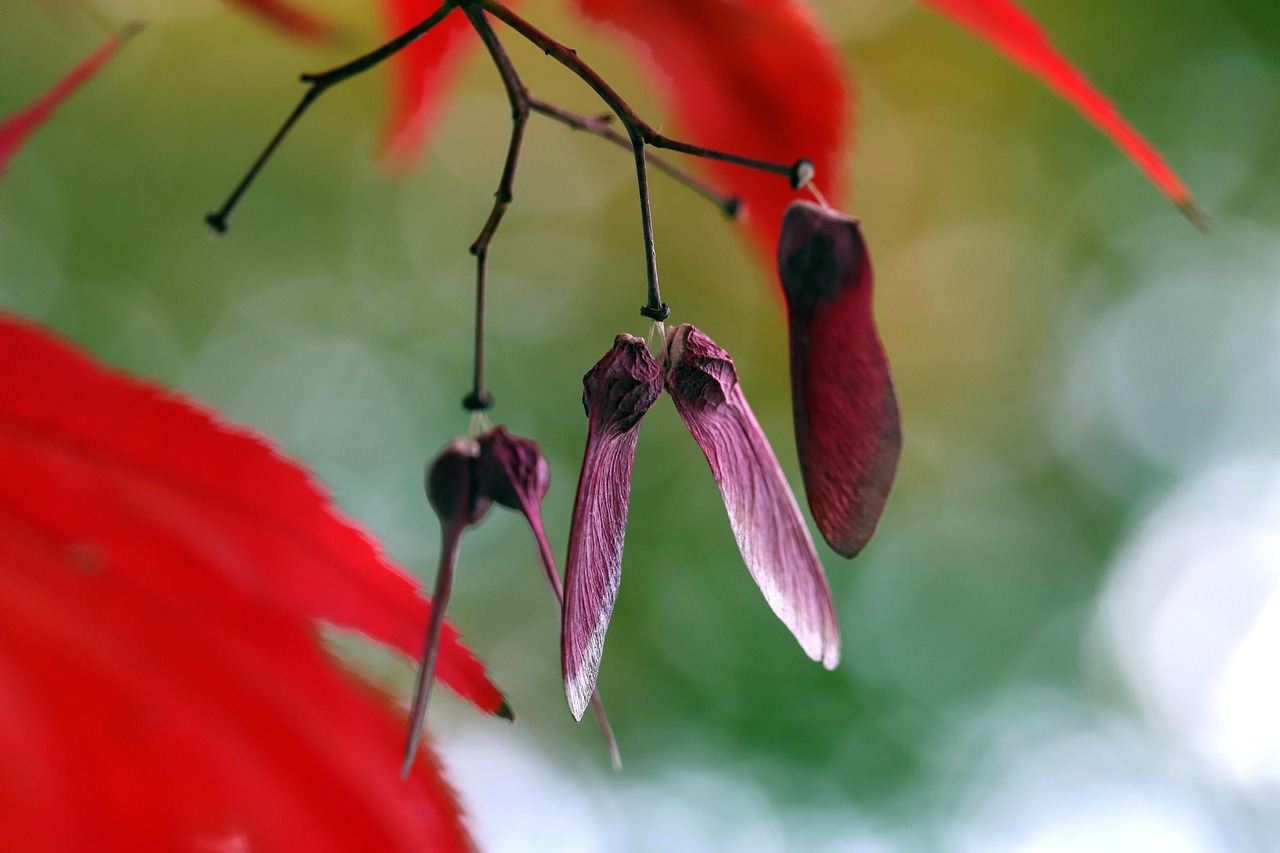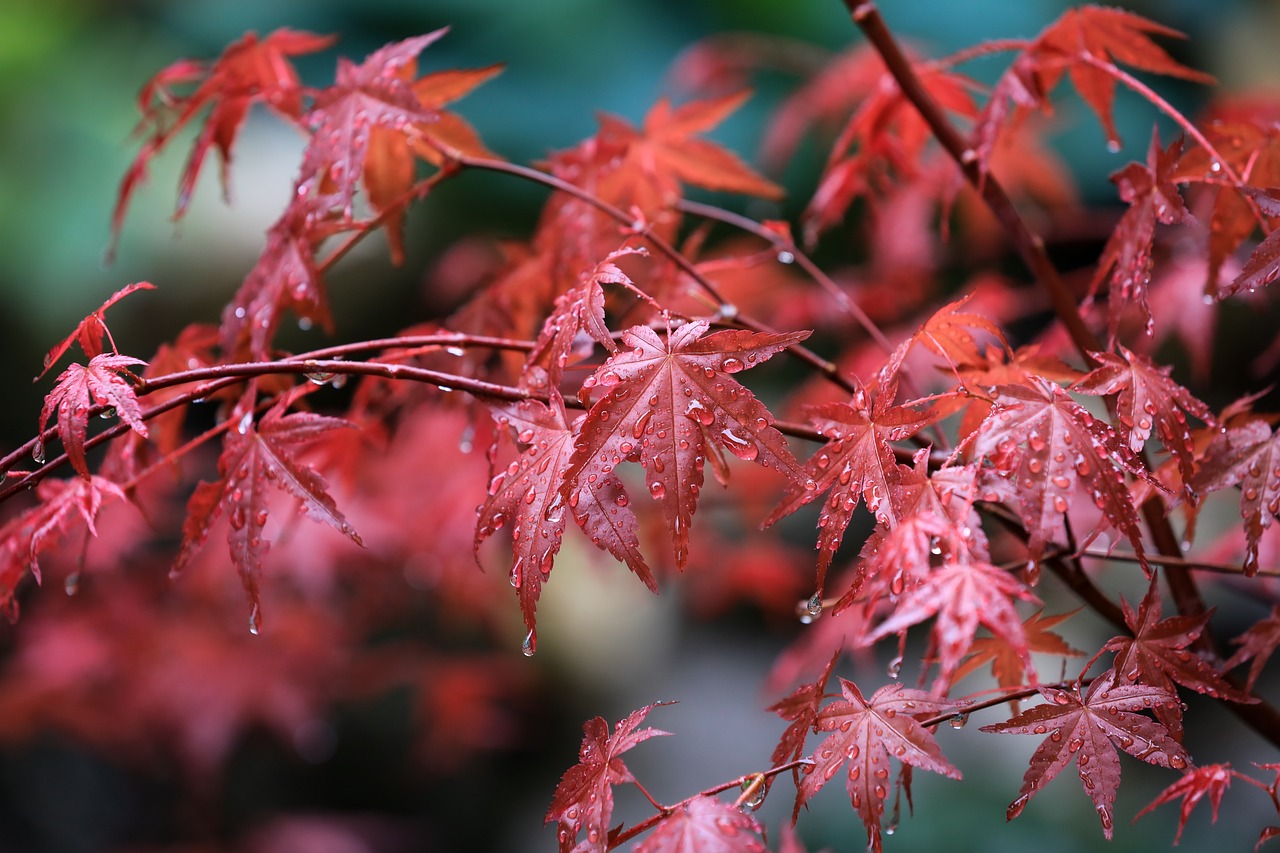The Red Maple tree, scientifically known as Acer rubrum, originated in North America. It is primarily found in the eastern and central regions of the continent, ranging from southern Canada down to northern Florida and as far west as Texas and North Dakota.
Understanding the Red Maple’s Habitat

The Red Maple is a versatile species that thrives in a variety of environments. It can be found in wetlands, uplands, and urban areas. This adaptability is one of the reasons for its widespread distribution. The tree prefers moist, well-drained soils but can also tolerate a range of soil types, including sandy and clayey soils.
Red Maples are particularly abundant in forests, where they often grow alongside other hardwood species. They can reach heights of 40 to 60 feet and have a spread of about 30 to 40 feet, making them an attractive choice for landscaping and urban planting.
Physical Characteristics
The Red Maple is easily identifiable due to its distinctive features. The leaves are typically three- to five-lobed, with a serrated margin. They are green during the summer but transform into vibrant shades of red and orange in the fall. This seasonal change makes the Red Maple a popular choice for ornamental planting.
In addition to its beautiful foliage, the Red Maple has a slender trunk with smooth, gray bark that becomes darker and more furrowed with age. The tree also produces small, red flowers in early spring, followed by winged seeds called samaras that mature in the late spring.
Geographic Distribution
The native range of the Red Maple extends across much of North America. Below is a table outlining key states where this tree species is commonly found:
| Region | States |
|---|---|
| Northeast | Maine, New York, Pennsylvania |
| Southeast | Florida, Georgia, North Carolina |
| Midwest | Ohio, Illinois, Indiana |
| Central U.S. | Texas, Missouri, Kansas |
As shown in the table, Red Maples are prevalent in various regions of the United States. Their ability to adapt to different climates contributes to their widespread presence.
Cultural Significance
The Red Maple holds cultural significance in several communities. It has been part of Native American traditions for centuries. Indigenous peoples utilized the tree for various purposes, including making tools, canoes, and even tapping for sap to produce syrup.
In modern times, the Red Maple has become a symbol of resilience and beauty. It is often chosen as a state tree or emblem due to its vibrant appearance and adaptability. Many communities celebrate the changing colors of its leaves in the fall with festivals and events.
Ecological Role
The ecological role of the Red Maple is vital for various ecosystems. It provides habitat and food for numerous species of birds and insects. The flowers attract pollinators like bees, while the seeds serve as food for squirrels and other wildlife.
Moreover, Red Maples play a significant role in soil stabilization and water quality improvement. Their roots help prevent erosion along waterways and contribute to maintaining healthy ecosystems by filtering pollutants.
Overall, the Red Maple tree’s origins and its adaptations have allowed it to thrive across diverse landscapes. Its importance goes beyond aesthetics, contributing ecologically and culturally to North American life.
Historical Significance of the Red Maple
The Red Maple has a rich history that intertwines with the development of North America. Native American tribes recognized the tree’s value long before European settlers arrived. They utilized its wood for crafting tools and structures, appreciating its sturdiness and availability.
As settlers expanded across the continent, they adopted many practices from Native Americans, including tapping the Red Maple for sap. This practice eventually evolved into the commercial production of maple syrup, which continues to be an important industry today.
Maple Syrup Production
The process of collecting sap from the Red Maple tree has become a cherished tradition in many regions. The sap is collected in the spring when temperatures rise above freezing during the day and drop below freezing at night. This temperature fluctuation creates pressure in the tree, allowing the sap to flow.
- Collection: Sap is collected using plastic tubing or buckets attached to the tree.
- Evaporation: The sap is then boiled to remove excess water, concentrating the sugars to create syrup.
- Harvesting: It takes approximately 40 gallons of sap to produce one gallon of pure maple syrup.
This time-honored practice not only provides a delicious product but also fosters a sense of community during the sugaring season, with many families and friends gathering to participate in the process.
The Red Maple in Landscaping
The Red Maple is a popular choice for landscaping due to its aesthetic appeal and adaptability. Gardeners and landscape designers appreciate its vibrant fall colors and its ability to thrive in various soil conditions. Below are some practical applications of Red Maples in landscaping:
- Shade Trees: Its broad canopy provides excellent shade, making it ideal for parks and residential yards.
- Street Trees: Many urban areas plant Red Maples along streets due to their tolerance for pollution and compacted soil.
- Ornamental Use: The tree’s striking red flowers and leaves make it a focal point in gardens.
These attributes enhance not only the visual appeal of outdoor spaces but also contribute to environmental benefits such as improved air quality and reduced urban heat.
Growth Conditions and Requirements
To successfully cultivate Red Maples, understanding their growth conditions is essential. These trees thrive in various settings but prefer specific conditions to flourish. Key factors include:
- Soil Type: They grow best in well-drained, moist soils but can adapt to clay and sandy soils.
- Light Requirements: Red Maples prefer full sun to partial shade, with at least six hours of sunlight daily.
- Water Needs: Regular watering is crucial, especially during hot summer months; however, they can tolerate short periods of drought.
By providing these optimal conditions, gardeners can ensure healthy growth and vibrant foliage that showcases the tree’s natural beauty.
Pests and Diseases

While generally resilient, the Red Maple is susceptible to certain pests and diseases. Awareness of potential threats can help in maintaining tree health. Some common issues include:
- Leaf Spot: This fungal disease causes irregular spots on leaves, leading to premature leaf drop.
- Verticillium Wilt: A soil-borne fungus that affects the tree’s vascular system, leading to wilting and yellowing leaves.
- Aphids: These small insects can infest young leaves, causing curling and stunted growth.
Regular monitoring and proper care can help mitigate these problems. Using organic pesticides or introducing beneficial insects can also provide effective control measures without harming the environment.
Cultural Impact and Symbolism
The Red Maple has transcended its biological significance to become an important cultural symbol in North America. It is often associated with strength and endurance due to its ability to thrive in diverse conditions.
This tree is not just a natural resource; it has also influenced art, literature, and folklore. Many artists depict its vibrant colors and forms in paintings and photography, celebrating its beauty throughout the seasons.
In addition, several states have designated the Red Maple as their official state tree, recognizing its importance to regional identity and heritage. It serves as a reminder of the natural beauty found across North America and fosters a connection between people and their environment.

The influence of the Red Maple extends beyond mere representation; it plays an essential role in educating communities about environmental stewardship and conservation efforts aimed at preserving native species.
Propagation and Cultivation of Red Maple
Understanding how to propagate and cultivate the Red Maple is essential for those looking to enjoy its beauty and benefits. This tree can be propagated through various methods, each with its advantages.
Methods of Propagation
The two most common methods for propagating Red Maples are by seeds and cuttings. Below is a breakdown of each method:
- Seed Propagation:
Red Maple seeds are typically ready for harvest in late spring. They can be collected and stored until the following spring for planting. Here are the steps involved:
- Gather mature seeds from the tree.
- Remove any remaining fruit or debris.
- Store seeds in a cool, dry place until ready for planting.
- In early spring, plant seeds in well-draining soil.
- Water regularly to promote germination.
- Cutting Propagation:
This method involves taking a cutting from a healthy Red Maple tree. The steps include:
- Select a healthy branch in late spring or early summer.
- Cut a 6-8 inch section just below a leaf node.
- Remove lower leaves to reduce water loss.
- Place the cutting in a pot filled with moist potting soil.
- Cover with plastic to maintain humidity until roots develop.
Both methods can be successful, but seed propagation takes longer to yield a mature tree. In contrast, cuttings may provide quicker results.
Care and Maintenance
Once established, Red Maples require regular maintenance to thrive. Proper care ensures that these trees grow strong and healthy. Here are some essential care tips:
- Watering: Newly planted Red Maples need consistent moisture. Water deeply during dry spells, especially during the first few years after planting.
- Fertilization: Apply a balanced fertilizer in early spring to promote healthy growth. Avoid over-fertilizing, as this can lead to weak branches.
- Pruning: Prune young trees to develop a strong structure. Remove dead or diseased branches as needed. Pruning should ideally take place in late winter or early spring before new growth begins.
- Pest Management: Monitor for pests such as aphids or scale. Use organic pesticides or introduce beneficial insects to control infestations.
By following these care guidelines, gardeners can enjoy the beauty of the Red Maple while ensuring its health and longevity.
Environmental Benefits of Red Maple Trees

The ecological contributions of Red Maples extend beyond their aesthetic appeal. These trees play a vital role in their ecosystems, offering numerous environmental benefits:
Carbon Sequestration
Like all trees, Red Maples absorb carbon dioxide from the atmosphere, helping to mitigate climate change. They store carbon in their biomass and release oxygen, contributing to cleaner air quality.
Erosion Control
The extensive root systems of Red Maples help stabilize soil and prevent erosion, particularly along riverbanks and slopes. This stabilization is crucial for maintaining water quality and preventing sediment runoff into waterways.
Biodiversity Support
Red Maples provide habitat for various wildlife species, including birds, mammals, and insects. Their flowers offer nectar for pollinators, while their seeds serve as food for many animals:
- Birds: Many bird species nest in Red Maples and feed on their seeds.
- Mammals: Squirrels and other rodents rely on Red Maple seeds during winter months.
- Pollinators: Bees and butterflies are attracted to the flowers, aiding in their reproduction.
Cultural Practices Surrounding Red Maple Trees
Cultural practices involving Red Maples vary widely across North America, reflecting the tree’s significance in different communities. Here are some notable traditions and uses:
Sugaring Festivals
In regions where Red Maples are abundant, sugaring festivals celebrate the maple syrup production season. These events often feature:
- Sap Collection Demonstrations: Visitors learn how sap is collected from trees using traditional methods.
- Syrup Tasting: Attendees can sample various grades of maple syrup and learn about its culinary uses.
- Crafts and Activities: Many festivals include craft booths, children’s activities, and educational workshops focused on nature and conservation.
Artistic Inspirations
The beauty of the Red Maple has inspired countless artists, writers, and musicians. Many works reflect the changing colors of its leaves or draw from its historical significance. This artistic inspiration contributes to a broader appreciation for nature and its preservation.
The cultural impact of the Red Maple is profound, showcasing how a single tree can resonate deeply within communities while providing important ecological benefits. Its legacy continues to thrive as more people recognize its value in both natural and cultural contexts.
The Future of Red Maple Conservation
As the world faces increasing environmental challenges, the importance of conserving native species like the Red Maple cannot be overstated. With climate change, urban development, and invasive species posing significant threats, proactive measures are necessary to protect this vital tree. Here are some key strategies for ensuring the future of Red Maples:
- Habitat Preservation: Protecting existing forests and wetlands where Red Maples thrive is crucial. Conservation efforts should focus on maintaining these ecosystems to support biodiversity and facilitate natural growth.
- Community Involvement: Engaging local communities in conservation initiatives can foster a deeper appreciation for the Red Maple. Educational programs and volunteer opportunities can help raise awareness about the tree’s ecological and cultural significance.
- Research and Monitoring: Conducting research on the health and distribution of Red Maples can provide valuable data. Monitoring their populations helps identify any changes or threats that may arise.
- Sustainable Forestry Practices: Implementing sustainable forestry practices can ensure that Red Maples are harvested responsibly, allowing for regeneration and long-term health of the species.
By focusing on these strategies, we can work towards a future where Red Maples continue to thrive and contribute to the richness of North America’s landscapes.
Benefits of Planting Red Maples
Planting Red Maple trees not only enhances the beauty of an environment but also offers numerous benefits to communities and ecosystems. Here are several advantages of incorporating Red Maples into landscaping and urban planning:
- Improved Air Quality: As they grow, Red Maples absorb carbon dioxide and release oxygen, contributing to cleaner air for nearby residents.
- Enhanced Aesthetic Appeal: The vibrant fall colors of Red Maples provide stunning seasonal displays that enhance the visual appeal of parks, streets, and gardens.
- Wildlife Habitat: By planting Red Maples, communities can create habitats for various wildlife species, supporting local biodiversity.
- Stormwater Management: The extensive root systems of Red Maples help absorb rainwater, reducing runoff and minimizing flooding in urban areas.
- Cultural Connection: Planting Red Maples can foster a connection to local history and culture, honoring their significance in Native American traditions and modern society.
These benefits highlight the importance of integrating Red Maple trees into our landscapes for both ecological and community well-being.
Final Thoughts
The journey of understanding the origins and significance of the Red Maple tree reveals much about its role in North America. From its historical use by Native Americans to its modern-day conservation efforts, the Red Maple embodies resilience and adaptability. Its widespread presence across various environments demonstrates not only its ecological importance but also its cultural significance.
As we continue to face environmental challenges, recognizing the value of native species like the Red Maple becomes increasingly important. Through community engagement, education, and proactive conservation strategies, we can ensure that future generations will enjoy the beauty and benefits this remarkable tree provides.
Ultimately, the Red Maple serves as a symbol of connection: between people and nature, past and present. By appreciating and preserving this iconic tree, we can foster a deeper understanding of our environment and our responsibility to protect it for years to come.
